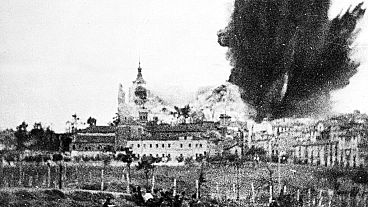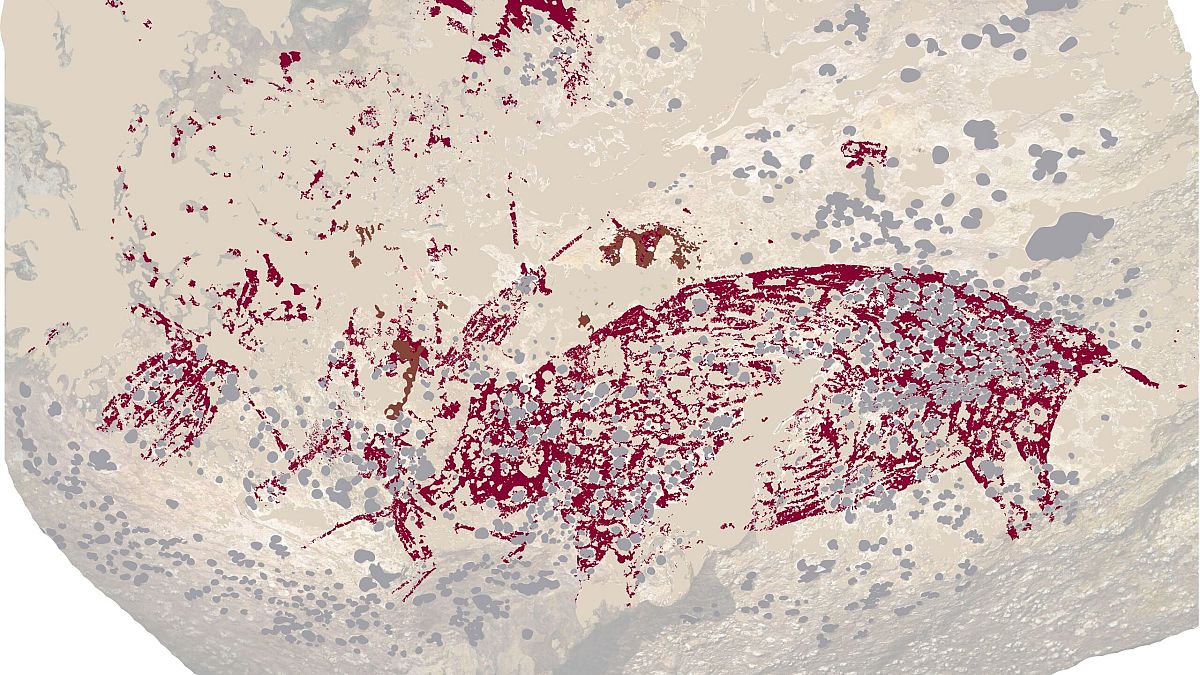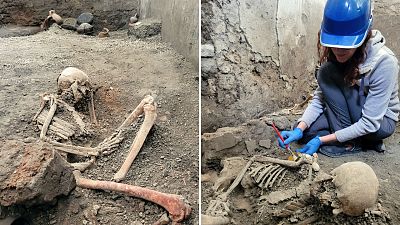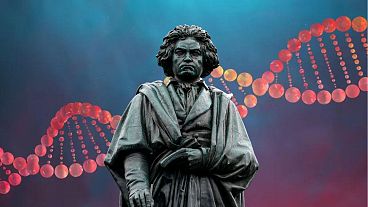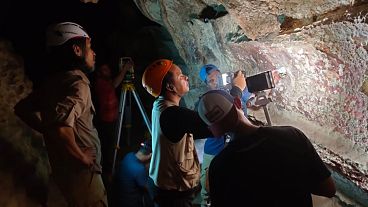The painting, found at Leang Karampuang cave on the east Indonesian island of Sulawesi, depicts three human-like figures and a wild pig.
A cave painting in Indonesia is the world’s oldest example of a ‘picture story’, thought to be at least 51,200 years old.
It is nearly 6,000 years older than the previous oldest cave art and was found nearby on the same island in Indonesia.
The painting, found at Leang Karampuang cave on the east Indonesian island of Sulawesi, depicts three human-like figures and a wild pig.
Prof Maxime Aubert, one of the team of researchers from Griffith University in Australia, told BBC News that the discovery sheds new light on creativity during human evolution.
“The painting tells a complex story. It is the oldest evidence we have for storytelling. It shows that humans at the time had the capacity to think in abstract terms,” he said.
The researchers from Griffith University, Southern Cross University and the Indonesian National Research and Innovation Agency published their findings in the journal Nature.
Samples of the artwork were taken in 2017 but weren’t dated until earlier this year.
What is the world’s oldest figurative painting?
Taking over the title from a 45,500-year-old image of a wild pig in a cave at Leang Tedongnge, the world’s oldest figurative painting depicts three therianthropes (human-animal hybrids) and a wild pig.
There are some examples of paintings in Spain - in Cantabria, Andalusia and Extremadura - that scientists have claimed are over 64,000 years old. The findings are controversial and widely rejected, however, as it is unclear how the researchers sampled and dated them.
The latest finding in Indonesia was dated using a new method by taking tiny samples layers of calcium carbonate that had formed on top of the art using a laser. This allows scientists to hone in on specific parts of the painting and establish a more accurate dating.
The image consists of a wild pig with its mouth partly open. The largest human-like figure has its arms outstretched and holds a rod.
The second, standing before the pig, also appears to be holding a stick and pointing it at the animal’s throat. The third figure appears to be upside down with one hand reaching towards the pig’s head.
Adam Brumm, a researcher from Griffith University who co-led the project, said warty pigs were common subjects in other artworks in the region.
“They were clearly economically important to these elite people,” he told the Guardian. “We can see they were also important to them symbolically and perhaps even spiritually.”
However, the meaning of the artwork remains elusive and it is not clear what animals were used in the human-animal hybrids.
A picture paints a thousand words
The figurative presentation makes the painting the earliest example of a ‘picture story’. Archaeologists have found geometric art on rocks in the Blombos Caves in southern Africa dating back to between 75,000 to 100,000 years ago.
But this new find shows representational art.
Adhi Agus Oktaviana, who led the research, says this form of storytelling was key to early human culture in Indonesia.
“Humans have probably been telling stories for much longer than 51,200 years, but as words do not fossilise we can only go by indirect proxies like depictions of scenes in art - and the Sulawesi art is now the oldest such evidence by far that is known to archaeology,” he told the BBC.
The dating method was also used on art in a nearby cave - Leang Bulu’ Sipong 4 - and found it was 48,000 years old, 4,000 years more than previously thought.



